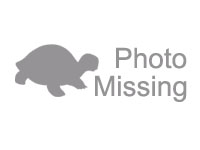Dermochelys coriacea (Vandelli, 1761)
Leatherback Turtle 稜皮龜
Largest turtle in the world. Weighs over 1000kg.
Body covered by tough leathery skin rather than a shell.
Black caparace with white spots and seven prominent longitudinal keels;
Plastron white.
Head black with prominent beak. Upper-jaw with two tooth-like cusps.
Limbs modified to flippers. Front flippers are well-developed and powerful.
Marine. Nest on beach.
Travels long distance in open ocean. Can dive very deep to forage.
Sometimes migrate to cold arctic water to feed.
The only known reptile that can remain active in water below 5°C.
-
Tough throat-lining prevents penetration of stings of jellyfish.
Rare in Hong Kong waters. First reported in Cheung Chau where one went onto beach and later return to the sea.
More sightings:
1964 - Lei Yu Mun.
1977, 1988
- dead specimen on beach in Sai Kung.
1994 - dead adult in Tung Lung Island.
Does not breed in Hong Kong.
Occurs worldwide from tropical to sub-polar oceans. Nests on tropical beaches.
Smaller individuals limited to region warmer than 26°C.
Threatened by fishery bycatch.
Ocean pollution, especially plastics being mistaken as jellyfish and ingested by turtle.
IUCN Redlist: CR (Critically Endangered)
China Redlist: Critically Endangered
